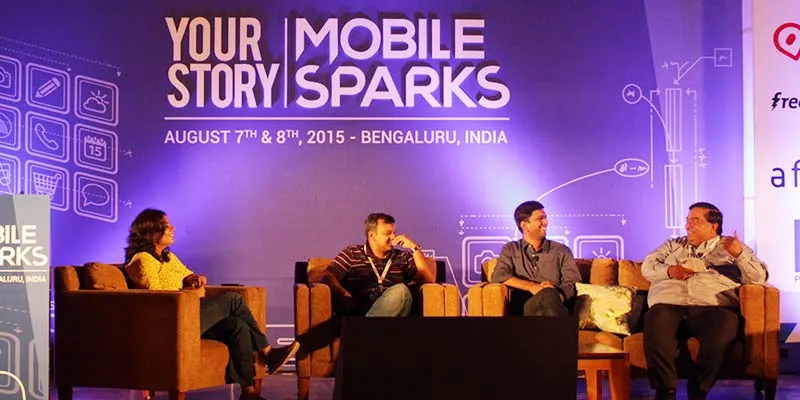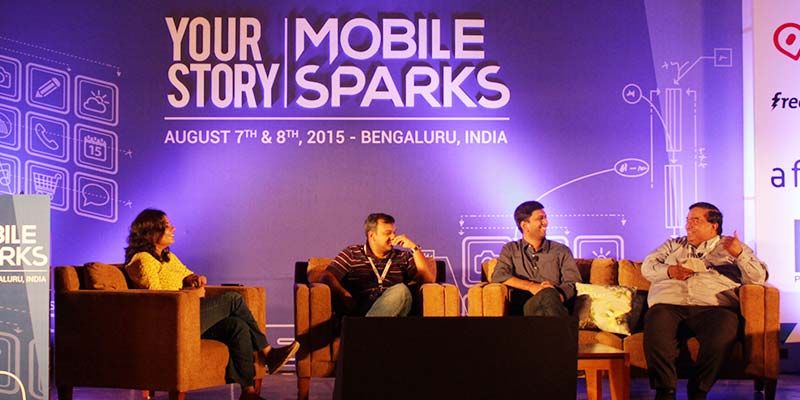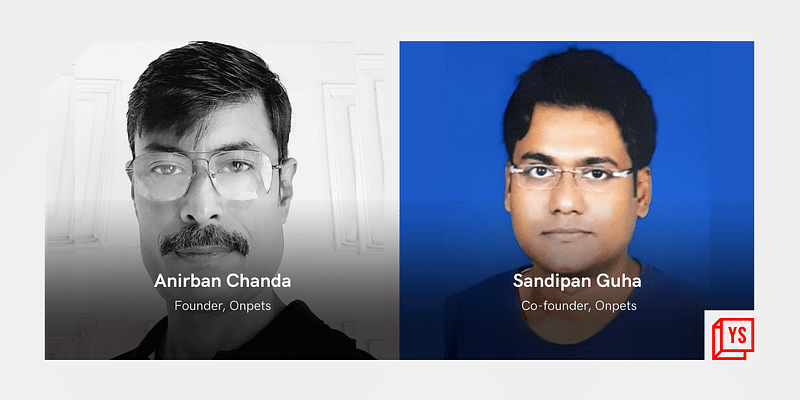What we're doing now with mobile apps is arcane. In a few years it will look like loading floppy disks
With the world going through a 'mobile bubble', and with several companies adopting a mobile-first strategy, it was interesting to see what opportunities venture capitalists saw in this space. At MobileSparks 2015 on August 8, we spoke to Director of Inventus Capital Partners Rutvik Doshi, Co-founder of Frictionless Ventures Ravi Gururaj, and Managing Director of Saif Partners Alok Goel in a panel on 'Untapped mobile potential'.
They said that, while there have been a significant number of people looking at mobile-first, several aspects of this have been overlooked. "Today, we need to see a mix of different kinds of ideas. There can be profitable ventures that work towards solving a societal issue," says Alok.
Digitising different aspects of life
Ravi Gururaj shared a rather interesting experience to explain the different disruptions in the mobile space that are yet to take place. He spoke of a recent two-hour experience he had had at the airport in Mumbai, while catching a flight. He had to walk around for a long distance to reach security; he had to carry a printout of his identification.
Then, he noticed the bag tags that could be digitised too; the chances of losing the tag are rather high. Then, on the plane, Ravi saw that the stewardess was walking up and down the aisle, taking everyone's orders. "If people could just order what they wanted on their phones, it would be so much better," says Ravi.
He adds that then there are cash transactions on flights that can be digitised. After reaching the Bengaluru airport, on booking a cab, Ravi found that the cab driver couldn't get the destination right. "So even the ones that are mobile-friendly are not fixing it," says Ravi. He adds that all of these experiences can be automated.
"If you think about it, I could just walk in with my fingerprint as identification. There is no need for a hard copy of identification. And this can be taken to all levels," says Ravi. But he agrees that it is a hard problem to solve; however, he believes that it's possible.

Mobile apps at Gen Zero
Ravi adds that mobile apps are yet to reach the pinnacle of their evolution. He says that the App Store as we use it today will be very different in a few years. "What we're doing now is arcane. When we look back, a few years down the line, it will look as antiquated as file transfer on floppy disks does today," he says.
He says that it just doesn't make sense to have to search g many things in an App Store for the one thing you want to download. He adds that, currently, there are a lot of problems in app infrastructure that will be solved as time progresses. There also is huge potential in adding sensory information from outside the device; soon, apps will begin to use different kinds of technology. "Investors will be willing to invest in something that's two years downstream, especially if it can show them a path," says Ravi.
What investors want?
Rutvik says that the investors in India can be classified into two kinds. One kind refers to a majority of investors who come from an offshoot of an American VC firm. This leads to a lot of cross-pollination of knowledge. Rutvik says that in these partnerships it is easiest to say “this is the Uber, or Instakart, or Amazon, of India.” This makes the VCs easier to convince. However, there is also another set of investors: entrepreneurs who become angel investors. "They're Indians, they've built companies in India, and they understand the Indian context and on-the-ground problems better. And they see all of this and then invest," adds Rutvik. He adds that while the VC firms do look at this, it isn't the same.
While they do seed fund, they tend to invest more in developed products that have their infrastructure in place. "Therefore, there isn't much seed money available to develop products in their initial stages," adds Rutvik.
Alok compares the investors in India to a petulant teenager shopping in a mall. He says teenagers don't know what they want, and they aren't sure of the price points, but if they see someone else trying to pick up the product, they stop them. "It's difficult to not buy something in fashion and it's difficult to buy something that's not in fashion. You don't necessarily go out and create a fashion there," adds Alok.
He says that it's a matter of evolution. With more entrepreneurs turning angel investors, the market will evolve, and it will get more investments and disruptions. "I work diligently; I check out what problem the organisation is planning to solve, and what scope it would have," says Alok. He adds that there are several uniquely Indian problems and ideas that entrepreneurs are looking at, and investors are looking to invest in them.
The numbers and metrics
When can an entrepreneur look at possible or assured funding? Are there some metrics that people need to look at? There are no absolute or right numbers, the investors said. The entrepreneurs come to know the right time themselves. The cost of starting a company or building an app has drastically reduced today.
"The moment you see people starting using the product, engagement happening, or retention, and if on a week-on-week basis there is some growth happening, and you begin to feel resource constraints, and face it consistently, then it's the right time to seek investment," says Alok.
The investment world in India too is seeing changes. Rutvik adds that, earlier, there would be clear demarcations between investment rounds. Angel rounds generally is for the idea stages, Series A is for proving that the product works strongly in a commercial way, and Series B is for grabbing the entire market. However, in the last one and half years, that distinction has got chaotic.
"Nevertheless, at every stage, get an investor who can add value at that point in time. At very early stages, you want someone to add intelligence to your business, so that while money comes in, there are also connections and feedback being added. At later stages you don't want too much involvement, because more investors being a part of the business does not help," adds Rutvik.
Funding in the mobile space is tough. Ravi adds that it's difficult to convince somebody to invest in a purely mobile space. "As the mobile population in India grows, the bar keeps rising on what is acceptable. Earlier if you needed 10,000 downloads for USD 100 million, you now need 100,000 downloads for the same amount," adds Ravi.
As an entrepreneur, funding should not be the only goal. In some cases, the app will see great use cases in a particular area (app for a local train - worked well in Mumbai, but not everywhere else).The app was earning revenue. It's not exactly bad business, but funding is not necessarily their goal.
As an entrepreneur you need to truly ask yourself - are you building a business, are you building a product, or are you building a feature? Businesses should be able to grow exponentially for long periods of time in order to acquire venture funding.Ifa product, it needs to solve a problem for a consumer and thus makes money by itself.If you're building a feature, then it's best to impress a larger company and get a job there. "Only an entrepreneur can answer these questions for himself," says Alok.











![[Funding alert] Plum raises $35M in Series C round led by A91 Partners](https://images.yourstory.com/cs/2/d72b5ef09db411ebb4167b901dac470c/Imageorxc-1648016620439.jpg)